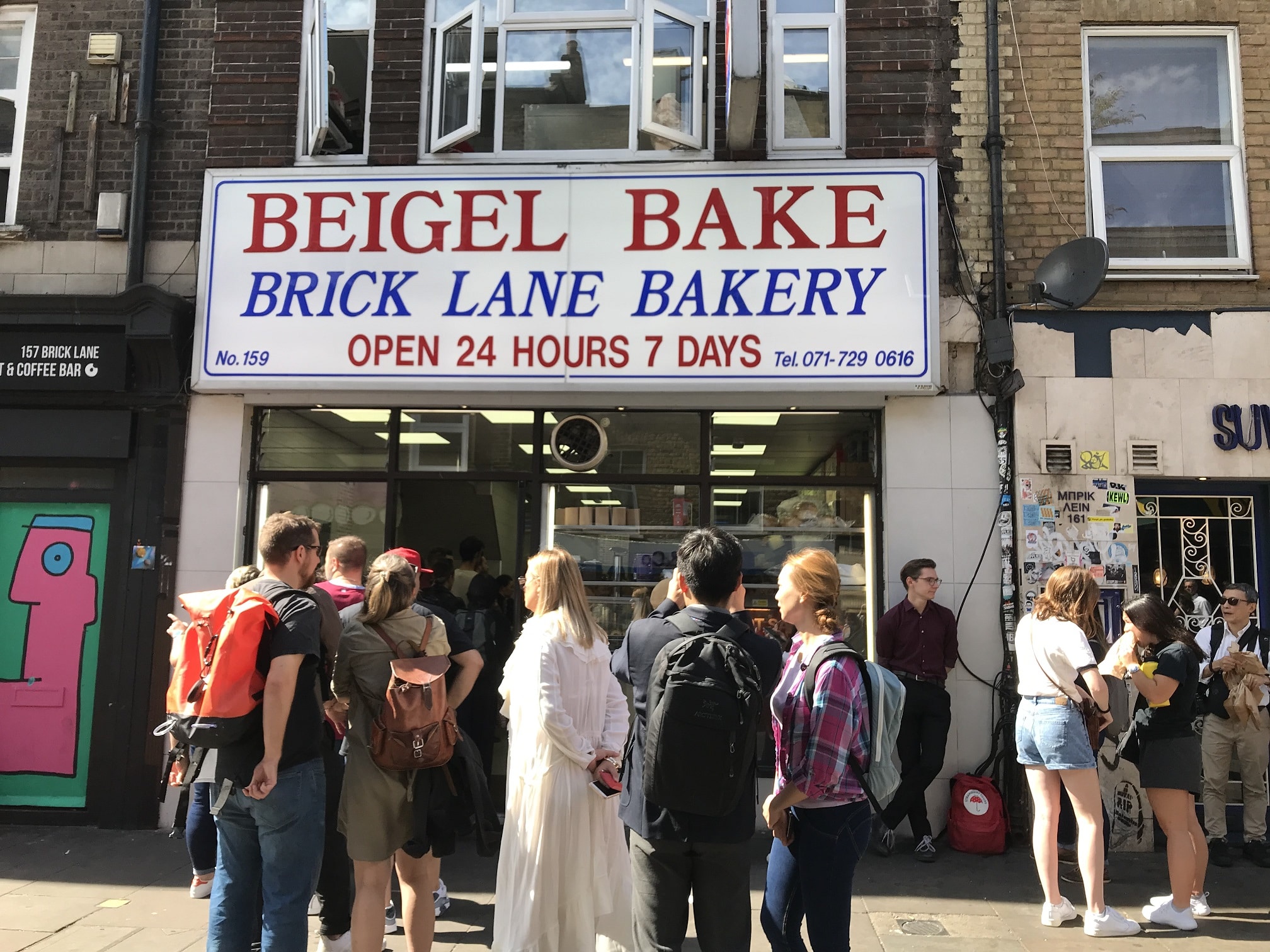Some of the best things to do in East London
Things to do in LondonOnce one of the worst slums in Europe, London’s East End is now a hub of creativity and home to a new breed of hipsters. Not surprisingly, our guided walking tour of east London is always a popular option with our guests! Read on to get a little flavour of the area and a preview of some of East London’s best hidden gems.
Over the course of 350 years, three waves of immigrants have shaped East London. First came the French Huguenots in the 1680’s, then the Eastern European Ashkenazi Jews in the 1850’s and finally Bangladeshi refugees in the 1970’s. Now it’s one of London’s coolest areas. There are plenty of things to do in East London and Shoreditch on any day of the week. But it’s on Sundays that the area really comes to life.
Street food in Brick Lane
Brick Lane’s reputation as London’s Curry Mile is firmly established. Gradually, however, brunch-serving trendy cafés and other alternatives are taking over from Bangladeshi restaurants. Visit on a Sunday and pop into the street food hall at Sunday Upmarket, in The Old Truman Brewery, for a mouth-watering selection of international food.

Brick Lane Beigel Bake
Meanwhile, the Brick Lane Beigel Bake has been churning out beigels since 1977. The no-frills bakery is open 24 hours a day, tempting everyone from late-night clubbers to taxi drivers through the small hours. They churn out around 3,000 beigels a day, in the traditional Jewish style, boiled before baking. Choose from the two most popular fillings, smoked salmon and cream cheese or salt beef with a pickle and dollop of hot mustard.

Street art
Shoreditch and Brick Lane are two of the best places to see street art in London. Set off on a treasure hunt to track down the latest modern murals and the city’s best graffiti in the East End. Veer off Brick Lane into Hanbury Street which has some of the best street art and into Ely’s Yard (a courtyard accessible via Dray Walk from Brick Lane).

East End communities
Explore the history of the East End through its religious buildings. One of the more obvious illustrations of the constantly changing community is the Jamme Masjid Mosque. Over the years, it has been a Huguenot protestant church, a Methodist chapel, a synagogue, and, since the 1970’s, a mosque.
The large Jewish community of around 100,000 who shaped Spitalfields in the 19th century has slowly dispersed and only 3 of the 150 synagogues have survived. Of these, the most significant is Sandys Row Synagogue, built originally as a Huguenot chapel in 1763, and first established as a synagogue by around fifty Dutch Jewish families in 1854. It flourished for decades, operating throughout both world wars. After a decline in the 1980’s and 90’s, encouragingly the synagogue is now undergoing a revival, with fortnightly services.

Shopping in East London
Pick up a bargain or two at Brick Lane’s famous Sunday Market. Browse the vintage stalls in the Old Truman Brewery market or try nearby Boxpark, at the junction of Sclater Street and Bethnal Green Road. This is a popup mall housing street food, bars and clothing retailers, built in refitted shipping containers. Meanwhile Old Spitalfields Market, a former Huguenot silk weavers’ market and then London’s fruit and veg market, is now home to trendy stalls, boutiques and shops in a covered square.

East End Street names
Keep an eye open for some interesting street names! Artillery Lane, Cable Street and indeed, Brick Lane, all give a clue to the trades that were once practised there. Our favourite is Frying Pan Alley. Situated close to Middlesex Street and Petticoat Lane market, the frying pan was the local ironmongers’ emblem.






